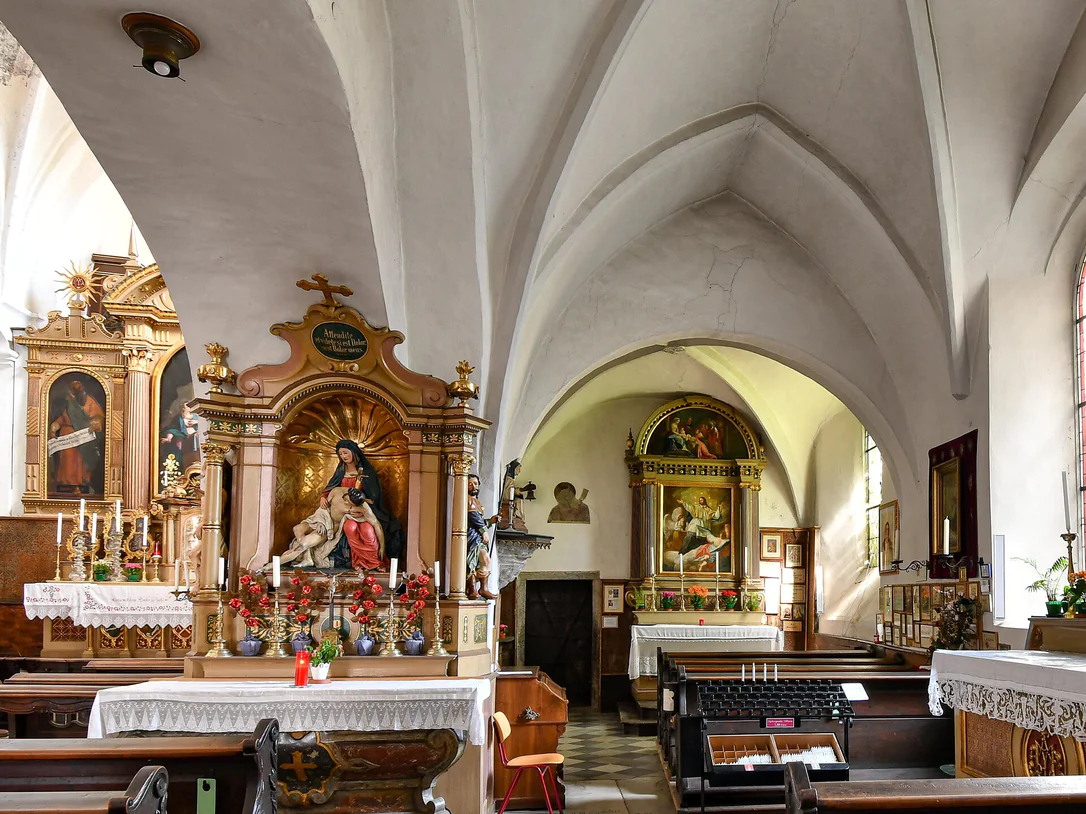The Lodner Chapel is situated at 2,259 metres above sea level near the Lodner refuge hut in the Zieltal valley. On 16 August 1933 the chapel was dedicated by Chaplain Gasser from Partschins/Parcines. Partschins/Parcines Band played at the dedication. Father Schulien, a German missionary from Rome, conducted the mass.
The landlord of the Lodner refuge hut, Toni Raffeiner from Karthaus/Certosa in the Senales valley, built the chapel following plans by the Meran/Merano Architect, Torggler. It is five metres long, three metres wide, five metres high and built completely from stone. On the wooden roof is a small tower containing the bell from the former Oberhauser chapel, which was destroyed by a landslide in 1917. When the doors are closed there is room for 30 people in the Lodner Chapel.
The wood was cut on the Nasereit Alp and carried beam by beam up to the Lodner hut. The boards came from the old Stettiner Hut and had to be carried over the Johannesschartl wind gap. The woodwork was undertaken by master carpenter Josef Hueber from Partschins/Parcines. The statue of St. Joseph on the altar was donated by the priest from Karthaus/Certosa in the Senales valley.
To mark the occasion of the chapel’s dedication, Cardinal Eugenio Pacelli sent a telegram and donated a picture. On 2 March 1939 Cardinal Pacelli became Pope Pius XII.
Every year in August, Partschins/Parcines alpine club, in cooperation with the Ziel Alp Association (Alminteressentschaft Ziel), organises the traditional mass for mountaineers and herdsmen in the Lodner Chapel. In accordance with tradition, Partschins/Parcines Band also plays there.












































































